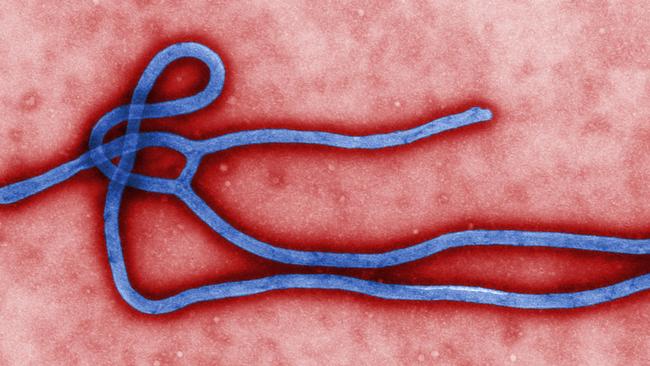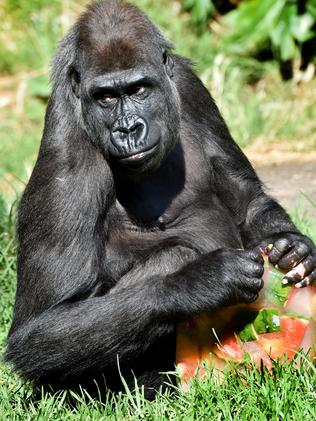Ebola decimating Africa’s gorilla and chimpanzee populations, conservationists warn
EBOLA deaths in west Africa may be stabilising, but scientists have revealed the devastating impact that the virus has had on some of the continent’s animal populations.

AS EBOLA deaths in West Africa start to stabilise, conservationists have raised concern about the devastating impact that the virus has had on the continent’s ape populations.
It is estimated that chimpanzee and gorilla numbers are down a third on their 1990s levels because of Ebola outbreaks.
The news comes as the World Health Organisation revealed a levelling off new ebola notifications in Sierra Leone, Liberia and Guinea — 150 last week, down from 550 notifications in a week at the peak of the outbreak.
The UK Telegraph quoted a report from ecologist Ria Ghai for the Jane Goodall Institute, in which she stated that “wild ape epidemics tend to go unnoticed for months or even years”.


The mortality rate from ebola among ape species is extremely high, partly due to the fact that apes are tactile with one another, which aids the spread of the disease.
The mortality rate for gorillas is 95 per cent and for chimpanzees it’s 77 per cent, the Telegraph reported.
The recent outbreak, which has killed over 8500 people in West Africa, was believed to have been spread by infected fruit bats, but conservationists believe that the disease can jump from ape species to humans if infected animals are butchered.
The World Wildlife Fund has also highlighted the issue, pointing to an ebola outbreak in Gabon in 1994 which they said wiped out the world’s second-largest protected population of gorillas and chimpanzees.



